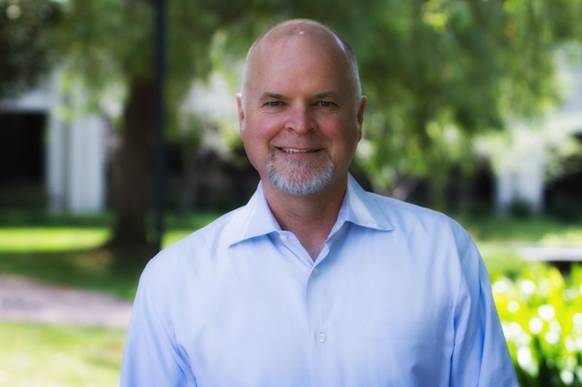Intuit: Is Your Equality Program Missing One Key Piece?

Intuit: Is Your Equality Program Missing One Key Piece?
Our Partner Spotlights highlight the innovative ways our Partner companies are advocating for change and equality in the tech field. Read the following piece by Scott Beth, Chief Diversity and Inclusion Officer at Intuit, to learn how corporations can drive change and promote equality and equity in the tech field.
Here I was, standing in front of international diplomats and business leaders at the United Nations Commission on the Status of Women (UN-CSW), giving my point of view about corporations’ roles in gender equality. As a white male, I knew I couldn’t relate to all the struggles of women in the workplace, but as an openly gay male, I have been in the position of feeling lesser than. We have all felt excluded, ostracized, overlooked or unaccepted at one point in time. It’s a demoralizing feeling, and it’s setting us back from living out our full potential.
Often I feel like I’ve been waiting all my life to be in the position I’m in now, responsible for reversing the adverse effects of inequality, whether for women, LGBTQ, racial minorities, or anyone feeling marginalized. I believe that we — Intuit and our peers — have a responsibility to propel parity.
History has shown, in fact, that corporations can play a key role in driving social change, from contributing to the end of Apartheid to advancing LGBTQ rights in the workplace. The equality movement itself is experiencing a massive resurgence thanks to companies that have begun to regularly and transparently report on gender and racial diversity. Companies can and should drive this change by making investments that raise the inclusion of minorities in society. This isn’t just my mission at Intuit, but my mission as a human being.
Equality vs. Equity
Simply put, equity and equality are two strategies we can use to get to a fair state in the workplace and society. While equality is treating everyone the same, equity is giving everyone what they need to be successful.
For example, by 2030, women will be the primary decision-makers for two-thirds of the nation’s wealth and by 2055, the U.S. will not have a single racial or ethnic majority. Yet our employee base does not reflect this. In this instance, equality would be to make sure that we treat women equally as men through equal pay; while equity would be making sure that women have the adequate support needed, such as unconscious bias training, the pregnancy disability act, and more.
Beyond being the right thing to do, fostering equal representation of diversity and striving for equity at our company will equip our organization to move into the future despite immense societal change. But equality only works when everyone is on the same level to begin with, and we know the world is far from fair.
Our World Today
We’re in the midst of a push for equality on a grand scale across society. One UN Women campaign, “HeForShe” has prompted 1.7 million men to sign up as advocates for gender equality. In late 2018 when California Governor Jerry Brown signed SB 826, the state became the first in the nation to require that public companies have at least one woman on their board of directors by the end of 2019. TheBoardList and Qualtrics surveyed 285 business leaders and board members to expose overwhelming support for the bill, with 38% of supporters stating their reason for supporting the bill as “desire for women who have already proven their equal value to be given positions they deserve.” We are starting to see early indicators in legislature that parity is possible, maybe even in our lifetimes.
In addition, many organizations are carrying more than their fair share of weight when it comes to pushing for equal representation, defined as giving everyone equal opportunities, rights and status. In many ways, progressive companies like Patagonia, inspire society to reexamine the role organizations can play in evolving ideas into actions. Patagonia has changed its company mission, for example, to be ‘saving our home planet.” But by only aiming to make all things equal for all employees, it’s likely that we’ll just be right back where we started with disadvantaged groups still falling behind. In other words, mandating equality without making any other changes is cause for calamity. This is when equity really starts to matter.
Pushing Our World Toward Parity
If we want to reach parity, it’s time to focus on creating new opportunities for those who lack opportunities in the first place. As the Inclusion Solution puts it, while “Diversity asks, ‘Who’s in the room?’ Equity responds: ‘Who is trying to get in the room but can’t? Whose presence in the room is under constant threat of erasure?’”
But here’s the thing: that’s not always as easy as it sounds. When we look at our workforce and try to make things equal based on skills or what employees bring to the table, we begin to lose our ability to be critical of the socioeconomic constraints, policies and practices that are hampering some workers. Equity requires real change and often feels unfair to the advantaged, if they don’t understand your motives or mission. Equity requires challenging the status quo and asking employees to make changes to the ways they’re used to doing things for the sake of the disadvantaged. This takes time, persistence and financial investment.
Here’s how we put equity into practice:
Creating new programs that look nothing like what your company already has. We’ve created new programs for returning mothers, people with disabilities, veterans and retired athletes that weren’t even on our radar five years ago. Our returnship program, Intuit Again, was created as a response to data that told us mid-career women who stop out of tech to raise a family are at a disadvantage. To drive equity, we offer a program that supports tech women back into the workforce through education and job matching, even if they don’t end up staying with Intuit (although 75% of them do). When we start to think about who needs the most support, it becomes tangible to see a path to closing the gaps propelled by socioeconomic disadvantages, educational disparities and prejudice toward minorities. And sometimes that path requires any ally moving a program or idea forward that looks nothing like what’s been done before.
Show–don’t tell–employees how to be allies. Words like “inclusivity” and “belonging” imply that employees are taking action behind to further drive the numbers companies report. Allyship programs that incorporate education, empathy and leadership principles empower employees to embrace differences with the added bonus of letting them see the value in equity programs in action.
Put your money where your mouth is. Investing in equity initiatives must become the standard, if we want to close societal gaps of racial, gender and orientation disparity. It’s important for companies to connect the benefits of diversity and inclusion with finances. When it increases retention, trust and innovation across teams, it pays for itself in dividends. Business leaders must invest in these programs though, to reap the benefits of a more diverse workforce. And in most cases, it requires resources even if it means cutting from somewhere else in the budget.
Share your secrets with your biggest competitors. Yes, it’s true that a diverse workforce is better for business — but an equitable world is better for society. What do we really care about here? If it’s the latter, nothing should stop you from sharing best practices, tips and tricks, newly developed programs and what’s not working even with your biggest competitor. Intuit’s CEO Sasan Goodarzi recently signed the “CEO Action Pledge,” the largest CEO-driven business commitment to advance diversity and inclusion in the workplace. Signing the pledge means we’ve committed to sharing our best practices—what’s working and what’s not—with the other 600+ companies that have taken the pledge.
When leaders at organizations start to make real investments, it drives tangible change. It becomes company priority. Culture shifts and inclusivity ensues.
Making sure, through hiring best practices, that diverse talent enters the door is not enough. If we don’t invest beyond the talent that exists, to drive new opportunities for historically socioeconomically disadvantaged minorities, real change can never exist. Corporations can play a beautiful role in driving the change we need to make the world a truly more equitable place for everyone.

